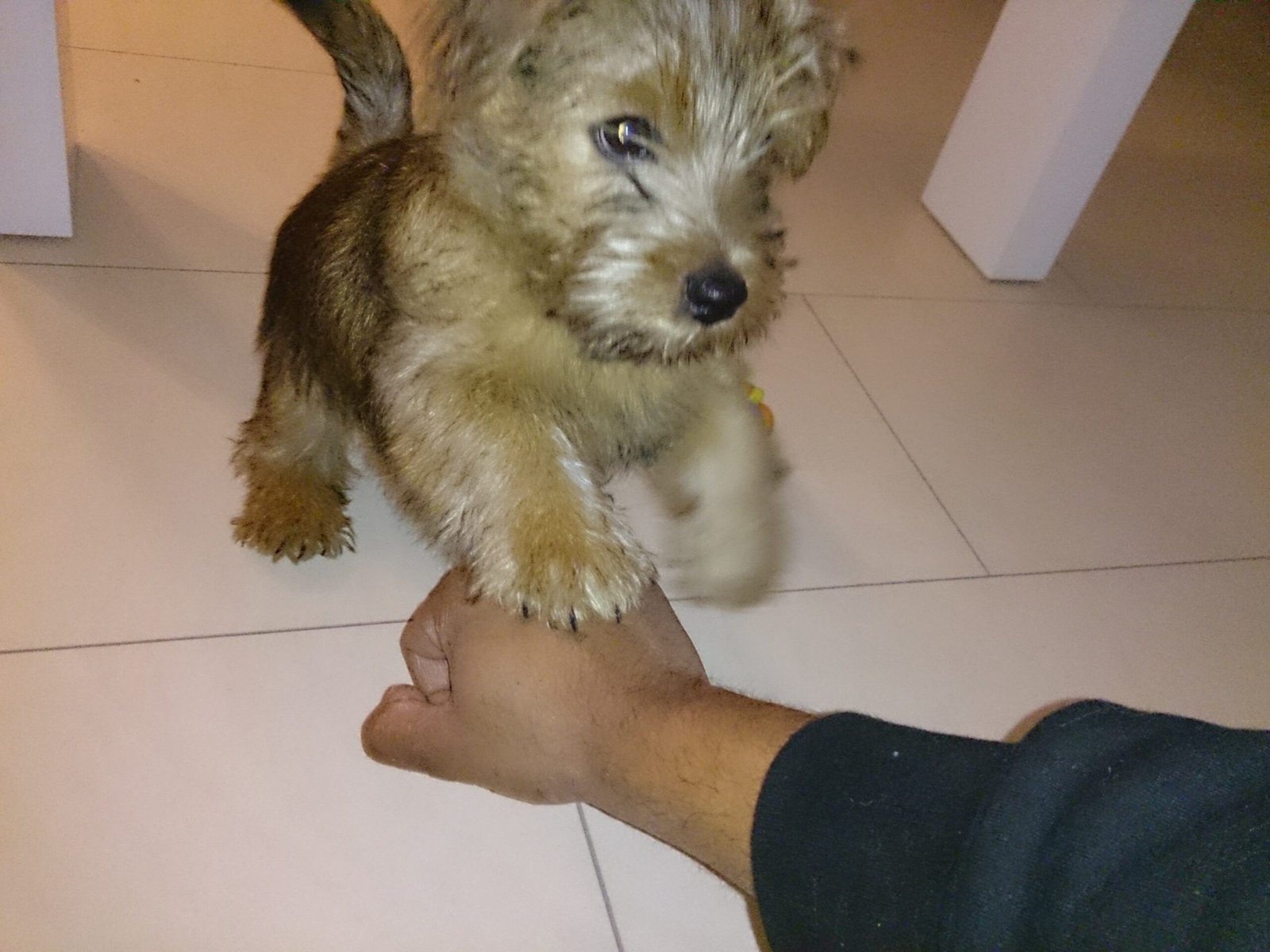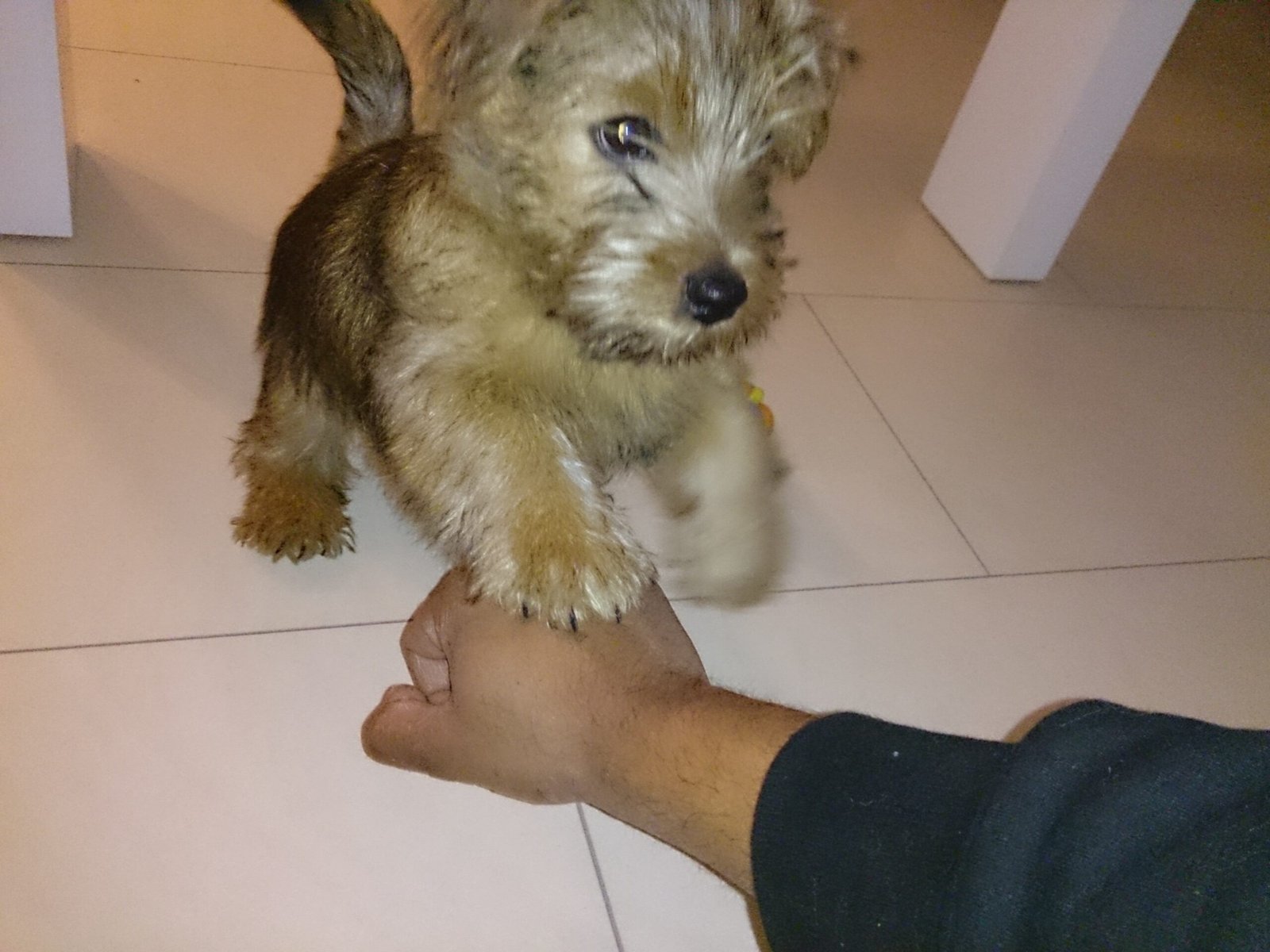Ever wonder why your dog leans on you, nudges your hand, or curls up right against your feet? These sweet touches aren’t random—they’re full of meaning. From showing affection and trust to seeking comfort or setting boundaries, the way your dog makes physical contact says a lot about your relationship. Each nudge or paw is your pup’s way of communicating without barking a word. Understanding these subtle signals helps deepen the bond you share and keeps your communication strong.
The Gentle Nudge: Seeking Attention or Comfort

When your dog softly nudges you with their nose, it can feel sweet or even a little demanding. This gentle touch is often your dog’s way of saying, “Notice me!” Dogs use nudges to ask for attention, whether they want a belly rub, a treat, or simply your company. Sometimes, especially in new or stressful situations, a nose nudge can mean your dog is looking for reassurance. It’s like a child reaching for a parent’s hand in a crowded place—your dog trusts you to keep them safe and calm. Pay attention to when these nudges happen, as they can reveal when your dog feels insecure or just wants to be close.
Leaning In: A Sign of Deep Trust
If your dog leans their body weight against you, it’s more than just a quirky habit. Leaning is a powerful display of trust and affection. In the canine world, pressing close to a pack member is a way to feel safe and connected. When your dog leans into your legs or side, they’re saying, “I trust you.” Sometimes, dogs lean when they’re nervous, using your presence as a shield from what scares them. But most often, this gesture is pure love—a silent reminder that you are their safe place in a sometimes confusing world.
Pawing at You: Desperate for Interaction

Few things are as endearing as a dog placing their paw on your arm or lap. This behavior can mean several things, depending on the situation. Dogs often paw at their humans when they want something, like food, playtime, or an extra scratch behind the ears. It’s their way of tapping you on the shoulder and saying, “Hey, don’t forget about me!” At times, persistent pawing can signal anxiety or boredom, especially if your dog is not getting enough exercise or mental stimulation. Think of it as your dog’s version of sending you a text—sometimes sweet, sometimes needy, but always a call for your attention.
Licking Your Hands or Face: More Than Just Affection
When your dog licks you, it’s easy to assume they’re just being loving. While licking often shows affection, it can also have deeper meanings. Puppies lick their mothers for comfort and to bond, and this instinct carries into adulthood. When your dog licks your hands or face, they may be expressing respect, seeking reassurance, or even tasting salty skin after a workout. Excessive licking can sometimes indicate anxiety or a need for comfort, especially if your dog seems restless. It’s a complex gesture, blending love, submission, and curiosity.
Cuddling Up Close: A Desire for Warmth and Connection

Dogs are pack animals, and cuddling is their way of staying close to those they love. When your dog curls up beside you on the couch or lays across your feet, they’re not just seeking warmth—they’re reinforcing your bond. This behavior can also be comforting for them, especially during loud noises or storms. Cuddling helps dogs feel secure and protected, like puppies snuggled up with their siblings. If your dog is a frequent cuddler, consider yourself lucky: you’re the center of their world, and they want you to know it.
Resting Their Head on You: Silent Signs of Affection
There’s something heart-melting about a dog resting their head on your lap or arm. This gesture is the canine equivalent of holding hands. It’s a sign of vulnerability and affection, a way for your dog to say, “I feel safe with you.” Sometimes, dogs use this touch to seek comfort when they’re tired or unwell, but most often, it’s a simple act of love. It’s a quiet, non-demanding way for your dog to keep you close—a gentle reminder that you’re their favorite person.
Jumping Up: Excitement or Overstimulation

It might be frustrating when your dog leaps up to greet you, but this burst of energy is packed with meaning. Jumping is often a way for dogs to get as close to your face as possible—where all the best smells and expressions are! While it’s usually a sign of excitement and happiness, it can also mean your dog is overstimulated or anxious after being alone. Training your dog to greet people calmly takes time, but remember: jumping up is your dog’s enthusiastic way of saying, “I missed you so much!”
Bringing a Paw to Your Face: Deep Emotional Bonding
Has your dog ever gently placed a paw on your cheek or chin? This intimate touch is rare, but when it happens, it’s a sign of profound trust and affection. Dogs usually reserve this gesture for those they feel closest to. It’s as if your dog is trying to connect on a deeper level, offering both comfort and closeness. This gentle touch can also be a way for your dog to get your attention, especially if you’re distracted. It’s their version of saying, “Look at me, I’m here with you.”
Sleeping Against You: Feeling Safe and Secure
When your dog chooses to sleep pressed up against you, it’s a heartwarming sign that they see you as family. In the wild, dogs sleep close together for safety and warmth. By snuggling against you during sleep, your pet is showing ultimate trust. They feel protected and content by your side. This behavior is especially common in puppies, but many adult dogs continue the habit throughout their lives. Sharing sleep is one of the most powerful ways dogs bond with their humans.
Placing a Paw on Your Foot: Marking Territory and Claiming You
You might notice your dog sitting at your feet and placing a paw on your shoe or foot. While it can be a sign of affection, it also serves another purpose: claiming you as their own. In the dog world, physical contact marks members of the pack. By touching your foot, your dog is saying, “You belong with me.” This gesture can also be reassuring for anxious dogs, helping them feel more connected and less alone.
Following You Everywhere: Constant Companionship
Some dogs are like furry shadows, never wanting to leave your side. This behavior is more than simple attachment—it’s a deep need for companionship and reassurance. Dogs that follow their humans everywhere are often highly bonded and may experience separation anxiety if left alone. This constant presence can be comforting for both dog and owner, but it’s important to ensure your dog feels confident and secure even when you’re not in the room.
Rolling Onto Their Back: Submission and Trust
When a dog rolls over and exposes their belly, it’s more than just an invitation for scratches. This vulnerable position shows immense trust and submission. Your dog is letting you know they feel safe around you and have no fear of harm. Sometimes, this gesture can also be a playful request for attention or a sign they want to interact. Either way, a belly-up dog is a happy, trusting one.
Your dog’s gentle nudges, cozy cuddles, and playful paw taps are more than just cute habits—they’re heartfelt ways of connecting with you. Understanding what these touches mean helps you respond with the love and attention your pup craves. From comfort to affection, each interaction strengthens your bond. So the next time your dog leans into you or rests a paw on your lap, know it’s their special way of saying, “You matter to me.”

Linnea is a born and bred Swede but spends as much time as possible in Cape Town, South Africa. This is mainly due to Cape Town’s extraordinary scenery, wildlife, and atmosphere (in other words, because Cape Town is heaven on earth.) That being said, Sweden’s majestic forests forever hold a special place in her heart. Linnea spends as much time as she can close to the ocean collecting sea shells or in the park admiring puppies.






